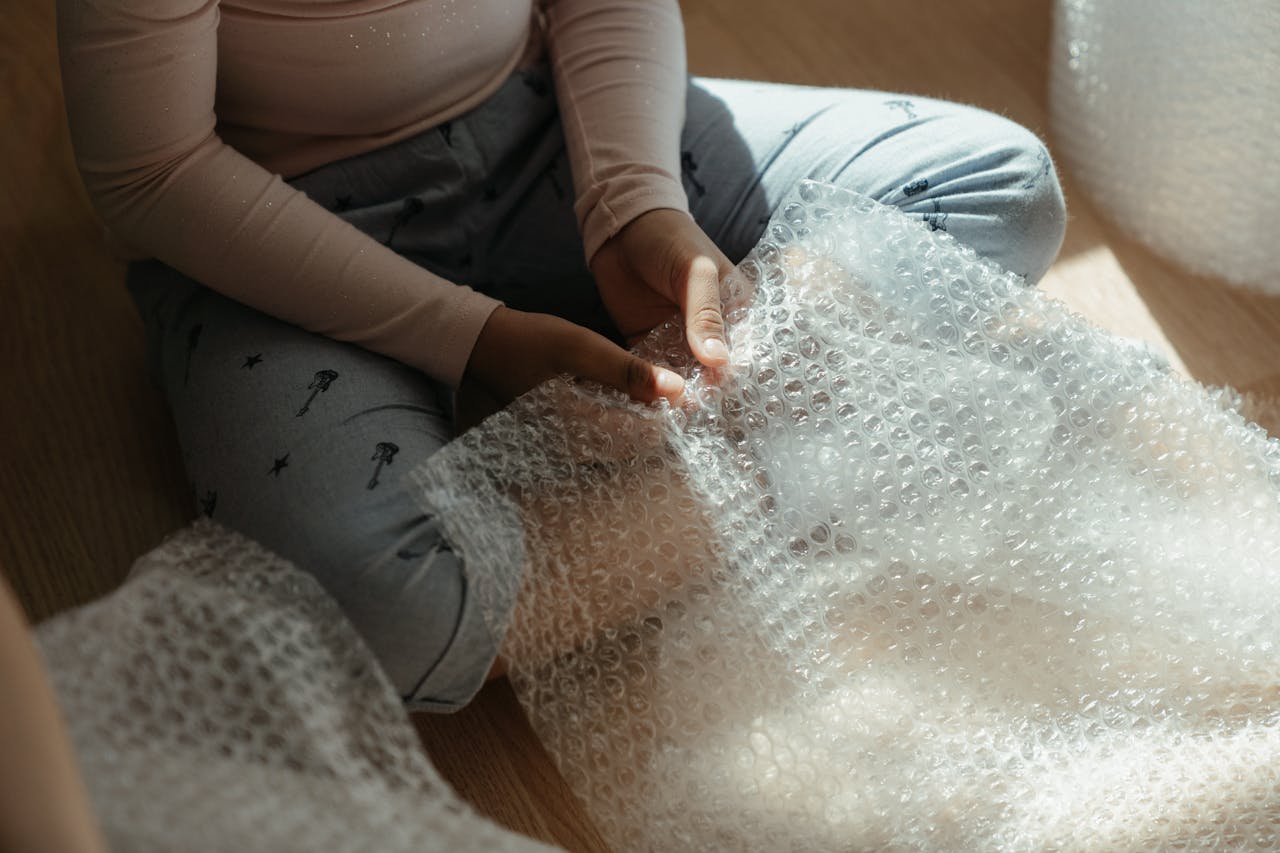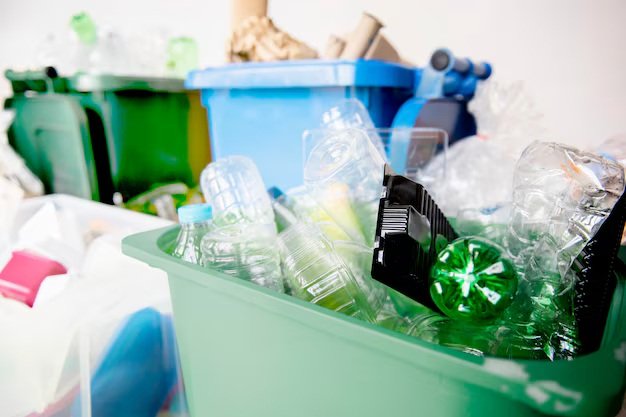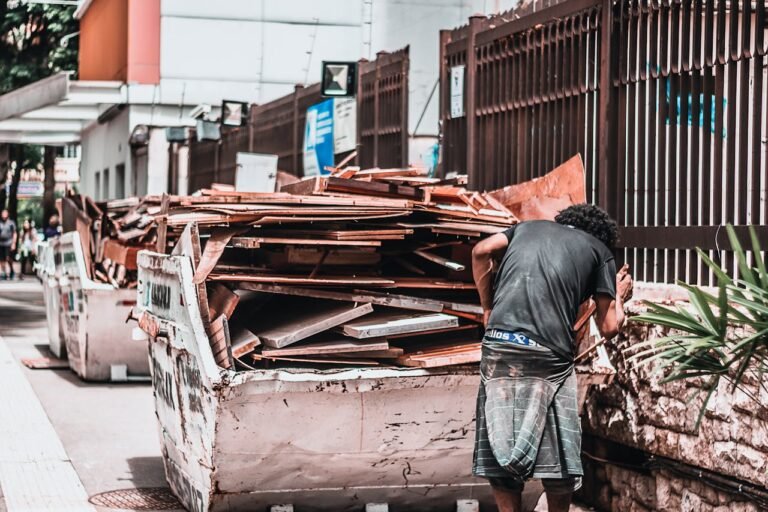How to Responsibly Dispose of Bubble Wrap: Expert Tips and Eco-Friendly Alternatives
Bubble wrap—it’s everywhere. Whether you’re a business owner shipping products, an online shopper receiving packages, or simply moving house, this soft, poppable plastic material has likely made an appearance in your life. But while bubble wrap offers fantastic cushioning, there’s a problem: what happens when the bubbles have all popped? How do you responsibly dispose of it?
I had to confront these questions myself a few years ago when I realised the bubble wrap from my small business shipments was stacking up alarmingly fast. In researching disposal methods, I uncovered the environmental impact of bubble wrap and found practical ways to handle it that don’t contribute to plastic pollution. This guide covers everything you need to know to dispose of bubble wrap responsibly, reuse it creatively, and, when possible, replace it with eco-friendly alternatives.
Let’s explore the full lifecycle of bubble wrap and learn how we can reduce its impact on our environment.

My First Encounter with Bubble Wrap Disposal: A Small Problem with Big Implications
When I first started my online business, bubble wrap was a packaging essential. Every week, I’d receive product samples packed in heaps of bubble wrap, and I used them even more to ensure safe shipments to my customers. However, after just a month, my office was filled with leftover bubble wrap. I was left wondering: Can I just throw it out? Recycle it? And what harm could come from sending it to the landfill?
At that point, I had no idea how problematic this single-use plastic could be. I tossed my first batch of bubble wrap into the recycling bin, thinking it was recyclable like plastic bottles. Unfortunately, that assumption was wrong. Bubble wrap requires special handling to avoid environmental damage. This realisation sparked my journey to learn about the responsible ways to dispose of bubble wrap, which I now want to share with you in this guide.
Learn More: How to Effectively and Responsibly Get Rid of Old Carpet
Bubble Wrap Basics: What’s It Made Of and Why Disposal Can Be a Challenge
Understanding the structure of bubble wrap helps explain why it’s not as easy to dispose of as other plastics. Bubble wrap is typically made from low-density polyethene (LDPE), which is a type of plastic that isn’t biodegradable and requires specific recycling conditions. Here’s a breakdown:
- Material: LDPE, a flexible and durable plastic commonly used for grocery bags, dry cleaning bags, and various packaging materials.
- Characteristics: Soft, lightweight, non-biodegradable, and resistant to tearing.
- Environmental Impact: LDPE doesn’t break down in landfills, meaning it can last for hundreds of years if not recycled properly. As it breaks down, it releases microplastics that can enter water systems and harm wildlife.
Why LDPE Requires Special Recycling
Most curbside recycling programs don’t accept LDPE materials like bubble wrap because they can clog sorting machinery. This limitation can leave people with the frustrating question: Where should bubble wrap go if not into curbside bins?
Quick Tip: For anyone new to recycling plastic film, websites like Earth911 and Plastic Film Recycling can help you locate a nearby recycling facility that accepts bubble wrap.
The Environmental Consequences of Improper Bubble Wrap Disposal
It’s easy to think one piece of bubble wrap doesn’t matter. But collectively, single-use plastics like bubble wrap contribute significantly to environmental pollution. The EPA reports that plastic packaging waste makes up nearly 30% of all plastic waste in the United States, and bubble wrap is part of this problem. When disposed of improperly, bubble wrap can:
- Fill Landfills: Since it doesn’t break down, bubble wrap adds to growing landfill waste, where it remains for centuries.
- Pollute Waterways: Lightweight and windblown, bubble wrap can easily make its way into rivers and oceans, harming aquatic life.
- Emit Microplastics: Over time, discarded bubble wrap breaks down into tiny microplastics that enter ecosystems, threatening animals and potentially affecting human health.
For me, these facts were eye-opening. As a business owner, I didn’t want to be part of this pollution cycle, so I set out to find sustainable ways to manage bubble wrap in my daily operations.
Step-by-Step Guide: How to Responsibly Dispose of Bubble Wrap
Below, I outline the most effective ways to responsibly dispose of bubble wrap, based on my own experiences and environmental research.
1. Recycling Bubble Wrap Correctly
If bubble wrap is clean and untorn, it can be recycled—but not in curbside bins. Follow these steps to ensure you’re recycling it the right way:
- Step 1: Clean and Flatten
Ensure the bubble wrap is free from contaminants like food, dirt, or tape. Flatten it to make it easier for recycling processors. - Step 2: Locate a Drop-Off Site
Use resources like Plastic Film Recycling to find a nearby drop-off location. Many grocery and retail stores have drop-off bins specifically for plastic film. - Step 3: Bundle with Other Plastic Films
Group your bubble wrap with other LDPE items like plastic bags and take them all to the drop-off centre. Most facilities prefer bundled items to streamline the recycling process.
Personal Tip: I keep a designated bin in my home for plastic films, including bubble wrap, plastic bags, and shrink wrap. Once a month, I take this collection to my local drop-off centre, making it easy and manageable.
2. Creative Ways to Reuse Bubble Wrap
Reusing bubble wrap can reduce waste significantly. Here are some clever ways I’ve found to give bubble wrap a second life:
| Reuse Idea | Instructions |
|---|---|
| Window Insulation | Use bubble wrap on windows by misting them with water and pressing them on. This traps air and reduces heat transfer, making it an affordable, reusable insulation option. |
| Pet Care | Place bubble wrap under your pet’s bed as a cushion or lining for warmth (cover with fabric to avoid chewing). |
| Gardening Protection | Use bubble wrap to insulate plant pots from the cold. Wrap around the pots and secure with twine. |
| Packing Storage | Save it for your next move or package shipment—it provides the same protection as new bubble wrap. |
| Art Projects and DIY Crafts | Involve kids in crafting projects like painting with bubble wrap or creating textured artwork. |
Each time I find a way to reuse bubble wrap, I keep it out of the landfill and contribute to reducing waste.
3. Donate Bubble Wrap to Small Businesses or Community Centres
Local businesses, art studios, schools, and even moving companies often appreciate donations of clean bubble wrap. Reach out to see if they can use it; this small gesture benefits them and helps keep plastic out of landfills.
Example: My neighbour runs an art studio for children and regularly needs supplies for packaging and craft projects. Donating my extra bubble wrap not only helps her business but also teaches the children about the importance of reusing materials creatively.
Sustainable Alternatives to Bubble Wrap: Reducing Your Plastic Footprint
Once I realized the impact of bubble wrap, I started seeking sustainable alternatives. I tested several options for my business and found that some alternatives can offer the same level of protection while being more environmentally friendly.
Comparing Sustainable Bubble Wrap Alternatives
| Alternative | Description | Pros | Cons |
|---|---|---|---|
| Biodegradable Air Pillows | A sturdy, biodegradable material made from mushroom roots (mycelium); it fully decomposes quickly. | Fully compostable, lightweight | May not protect very fragile items |
| Mushroom Packaging | A sturdy, biodegradable material made from mushroom roots (mycelium); fully decomposes quickly. | Strong, eco-friendly, naturally breaks down | Limited availability, higher cost |
| Honeycomb Paper Wrap | Made from recycled paper with a honeycomb structure that absorbs shock. | Recyclable, effective cushioning | Bulkier than bubble wrap |
| Corrugated Cardboard Sheets | Made from recycled cardboard and provides strong protection when layered. | Recyclable, strong | Not flexible, heavier than bubble wrap |
| Recycled Paper Shreds | Shredded recycled paper that provides effective cushioning for light items. | Recyclable, affordable | Messy, may not protect heavier items |
Each alternative has its advantages and trade-offs, but choosing eco-friendly packaging can make a significant impact over time. For my business, I found that honeycomb paper wrap worked well for smaller items, and recycled air pillows were ideal for fragile products.
When I first switched to biodegradable air pillows, I was unsure about how my customers would respond. But the feedback was overwhelmingly positive. Customers noticed the eco-friendly packaging and appreciated the effort, with some even sharing their enthusiasm on social media. This shift not only helped reduce plastic waste but also became a great way to build trust and connect with eco-conscious clients.
Learn More: Eco-Friendly Ways to Safely Recycle Or Dispose Fluorescent Tubes
Expert Insights on Plastic Waste Reduction
In my research, I found out that several environmental experts have shared valuable insights on reducing plastic waste. Dr. Emily Carter, a plastic pollution researcher, emphasised that individual choices add up over time. “The cumulative effect of many small actions can lead to significant environmental benefits,” she said. By choosing sustainable alternatives or reusing materials, we help reduce demand for new plastic production, which can lead to less plastic waste in landfills and oceans.
Studies also show that even modest reductions in single-use plastics have ripple effects. A recent analysis from the National Oceanic and Atmospheric Administration (NOAA) found that coastal cities that implemented plastic-reduction programs saw a 30% decrease in plastic debris along their shores within a year.
Taking the First Steps: Building a Sustainable Packaging Strategy
Creating a strategy for sustainable packaging can help manage waste effectively, whether for personal or business use. Here are some steps I implemented that can help you build your own plan:
- Assess Your Needs: Identify the amount and type of packaging material you use regularly. Can it be reduced or replaced with sustainable alternatives?
- Set Up a Recycling System: Keep a dedicated bin for plastic films and set reminders to take it to a recycling drop-off centre monthly.
- Incorporate Reusable and Recyclable Materials: Use honeycomb paper or corrugated cardboard for fragile items, and reuse bubble wrap where possible.
- Inform Your Network: If you run a business, let your customers know about your eco-friendly packaging. It enhances brand loyalty and encourages others to adopt similar practices.
Conclusion: Small Changes, Big Impact
Adopting a responsible approach to bubble wrap disposal may seem small, but it’s part of a larger commitment to sustainable living. Each time we recycle, reuse, or choose eco-friendly alternatives, we’re making a positive impact on our environment. And as more of us take these steps, the demand for eco-friendly solutions will continue to grow.
This journey has taught me that even the smallest packaging choices can contribute to a cleaner planet. Whether you’re a business owner, a frequent online shopper, or just someone aiming to live more sustainably, taking small actions to reduce your plastic waste adds up. Let’s pop those bubbles responsibly and make every package count toward a greener future.







